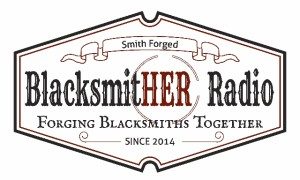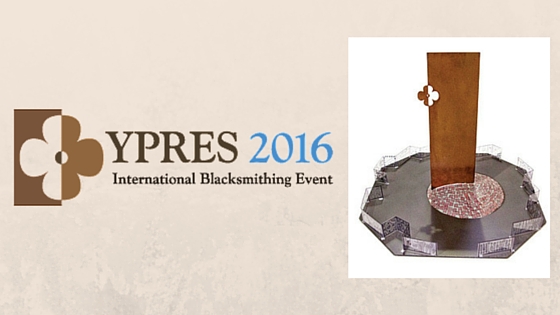Websites: DIY or Hire a pro??
“It’s never about your resources, it’s about your resourcefulness.” Tony Robbins
Click Here to Get Your Own PDF Copy of This Article
So many options are available for anyone to have a website spotlighting their portfolio. Although I am not a website expert, I have taken a four 10 – 15 week internet business courses, and I have worked with four different website designers over the past five years. Some of them for my artist and podcast websites and some for other companies. I thought it might be helpful to share what I have learned so that it might give you options for a path you want to take in building a new website for your artistic blacksmithing portfolio.
You have 3 choices about getting a new website:
DIY - Do it yourself
- Choose a website hosting service
- I recommend and use DreamHost - http://www.dreamhost.com/r.cgi?1939280
- Hostgator - http://www.hostgator.com/
- Siteground - http://www.siteground.com/
- Bluehost - http://www.bluehost.com/
- Choose a low or no cost web design template
- Free WordPress Themes - http://wordpress.org/extend/themes/
- Organic Themes – http://www.organicthemes.com/
- Woo Themes – http://www.woothemes.com/
- Thesis Theme – http://www.diythemes.com/
- Studiopress Theme - www.studiopress.com/
Use a “done for you” website template and hosting plan
- With a shopping cart
- Volusion – http://www.volusion.com/
- Big Commerce – http://www.bigcommerce.com/
- Shopify - www.shopify.com
- Big Cartel – http://www.bigcartel.com/
- Without a shopping cart
- WIX – 5 basic website templates, http://www.wix.com/
- Squarespace – clean website builder, http://www.squarespace.com/
- Weebly – great feature sets, http://www.weebly.com/
- SiteBuilder – very simple and free, https://www.sitebuilder.com/
- FASO - specific to artist websites, https://www.faso.com/
Hire a web designer
- See the suggestions lower in this article on how to find a good fit for you
- Beach Pea Designs - http://www.beachpea.ca/
- Blacksmith’s Wife Marketing - http://www.blacksmithswifemarketing.com/
- Red Peach Designs - http://www.redpeachdesigns.com/
- Persnickety Graphics - http://www.persnicketygraphics.com/
DIY Option
Today there are so many resources available to build your own website easily and without the need of a huge amount of “techy” knowledge.
Things to consider:
- What’s the best web design for your business model?
- What’s the learning curve of building and updating your site on your own?
- Pricing, hosting, email collecting, design?
- Make sure the website is mobile responsive and look right on a mobile phone and tablet
- Branding, business name, color schemes and logos
- Branding and Logo Online Tools and Resources:
- Canva – This is a free online tool that allows you to make you own graphics that can be used in documents, Facebook, and on your website. Once you sign up for free, Canva will send you design “how to” tips, very useful! https://www.canva.com/
- Swiftly – This online company pools graphic designers from all over the world and best fits them to your task for only $19 per task. Swiftly makes it super simple to get any small design task done quickly. From logo improvements, to business card updates, or even photo retouching. https://swiftly.com/
- 99 Designs – A graphic design online marketplace, you submit a description of a design you are looking for (such as for a website) and then you will receive dozens of different design ideas and then you pick which one you like the best in 7 days. http://99designs.com/
- Branding and Logo Online Tools and Resources:
YouTube is a great resource for free instructional videos on creating websites. I really like this YouTube Video – “How To Create a Website/Step By Step Tutorial” by Tutorial Nation. This 15 minute video guides you through choosing a platform, setting up a domain and hosting account, and installing the platform, they use Word Press for the platform. Link to video, https://youtu.be/cp2GzSFvBDQ .
I highly recommend using Word Press to build your website, it’s very easy to use. To see more information, such as features, a getting started guide, Word Press lessons go here, http://codex.wordpress.org/. Another Word Press resource I like to use is a business called WP Curve (http://wpcurve.com/ ). They offer world class developers to help with maintenance, support and any small jobs you need done for a low cost. This is an option if you don’t already have a “go-to” person to change or update your website when needed.
Here is a list of “must haves” that every website needs:
Home page
- Explains why your site exists, why it benefits your audience, offer free value to build trust and genuinely help your audience.
- Immediately let your visitors know why they have come to the right place.
- Have a “Sign up for free updates” box that captures emails above the fold (meaning it is on the computer screen without having to scroll down) – growing your email list is the most important thing you can do to build an audience and gain their trust to eventually buy from you. Your email list is MORE IMPORTANT than your Facebook page, Twitter followers or anything else, it is your most valuable asset.
- Keep it simple and “sticky”, don’t add too many links that lead your audience away from your website to another website.
About page – (one of the most visited pages on your website besides the home page)
- First it should be to educate your audience, not to sell them. Tell the story of how you became who you are and how you developed what you are offering and why you are doing it. Help them relate to you.
- This page is where you have them or you lose them. If you start talking about your company first, you might probably lose them. But if you talk about why they should care, why should they read, what problem are you going to solve, or how you’re going to make their lives better, are more likely they stay and keep going.
- Provide testimonials, social proof.
- Have a “Sign up for free updates” box that captures emails in the sidebar.
- A photo of yourself to keep it real and personable.
Shop or product page - If you are selling on your website you will need a gallery or product page – aka your “shop”
- Product descriptions.
- What’s in it for the customer?
- Details about the product – size, dimensions, weight, color, how many pages.
- Pricing.
- Guarantee, shipping and refund policy (this can all be on a customer FAQ page).
- Pictures
- Add a PayPal button in addition to accepting credit cards.
Contact page
- Your first and last name.
- An Address, this can be your home address or a PO Box.
- Your phone number or 800 number (your visitors are more likely to instantly like and trust you when seeing this)
- Your email or a contact form where your visitor can email you, there are free WordPress plugins for contact forms.
- How soon your visitor can expect a response from you, maybe add your working hours.
Social Media buttons
- If you are using WordPress there are several free plugins that are easy to install and connect each button to your Facebook page, Google+ page and twitter account.
Privacy Policy – a statement that indicates how you are gathering and using a customer’s data.
- You can Google standard privacy policy samples for templates or you could even write your own.
Hiring A Web Designer
There is a difference between a website designer and a website developer. A designer has strong skills in graphic design, branding, color schemes, and layout. A developer has strong skills with SEO, writing code, and making the site functional. Some people can do both.
Things to consider before hiring a web designer:
- What can the pro do for your website?
- Can they make a website from scratch?
- Will they “a la carte” parts of building a website?
- Can they make graphic designs into vector formats?
- Are they familiar with ecommerce and online shopping carts?
- Do they know about the importance of building an email list and how to integrate that?
- Do they understand what needs to be “above the fold” on your home page?
- Ask them to share their 3 latest projects or websites.
- Contact the owners of the websites to ask them if they would recommend there designer?
- What is their availability like, how quickly can they get back with you?
- What are their hours/days that they work?
- What are their specialties?
- Shopping cart integrations
- SEO Tactics– visibility on the internet
- Artist portfolios and galleries
Before signing a contract make sure you know what happens if you are not happy with the work they provided. Also discuss clear timelines and payment options.
To wrap up, there are many options to choose from to start a website. Just be clear with what you want on your website before you begin. I like to draw out the framework on a piece of paper first, I’m a visual person and that always helps me “see” it in a clear perspective.

















